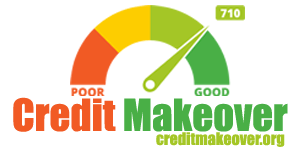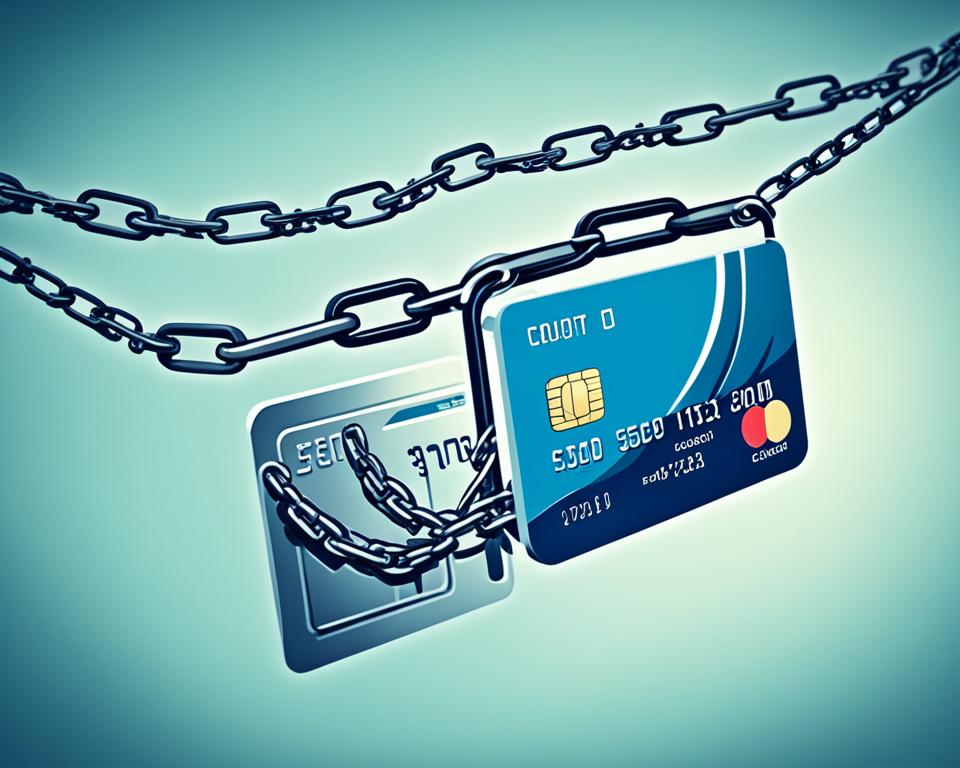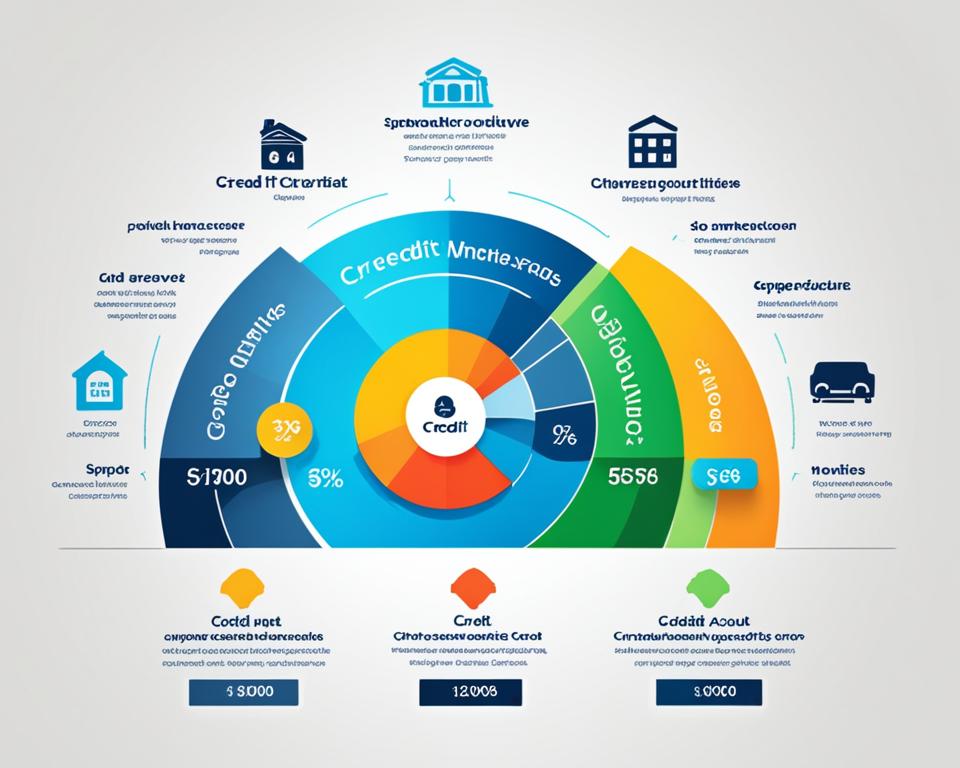Are you looking to improve your credit score and enhance your financial wellness? One essential credit repair tip is to reduce your credit card balances. High credit card balances can negatively impact your creditworthiness, making it harder to secure loans, mortgages, or favorable interest rates. By implementing effective strategies to lower your credit card balances, you can take control of your debt and improve your overall credit score.
In this article, we will explore why reducing credit card balances is crucial for credit score improvement and provide you with practical techniques to achieve this goal. Whether you’re struggling with multiple credit cards or carrying a significant amount of debt, these strategies will help you on your journey towards financial success.
Key Takeaways:
- Reducing credit card balances is essential for improving your credit score and financial wellness.
- High credit card balances can negatively impact your creditworthiness and ability to secure favorable financial opportunities.
- Implementing effective strategies like debt reduction techniques and creating a budget can help you lower your credit card balances.
- Monitoring your progress and staying motivated are crucial to successfully reducing credit card balances.
- By taking control of your debt and implementing these strategies, you can enhance your overall creditworthiness and achieve financial success.
Understanding Credit Card Balances
Before diving into the strategies for reducing credit card balances, it’s crucial to understand how they impact your credit score and overall financial well-being. One key aspect to consider is credit utilization.
Credit utilization refers to the percentage of available credit that you actually use. It is a significant factor in determining your creditworthiness. When your credit card balances are high, it can negatively impact your credit score.
Managing your credit card balances effectively can lead to better financial management and improved credit fixes. By reducing your credit card balances, you can positively influence your creditworthiness and take control of your finances.
Let’s take a closer look at how understanding credit card balances can benefit you:
1. Impact on Credit Score
Your credit card balances play a crucial role in determining your credit score. High credit card balances can increase your credit utilization ratio, which is the percentage of your available credit that you’re currently using.
A high credit utilization ratio suggests that you may be relying heavily on credit and may be at a higher risk of defaulting on payments. This can negatively impact your credit score and make it more difficult for you to access credit in the future.
2. Credit Fixes and Improvements
Reducing credit card balances is an essential step in credit fixes and overall financial improvement. It demonstrates responsible financial management, which is highly valued by lenders and credit bureaus.
By lowering your credit card balances, you can improve your credit utilization ratio, thereby boosting your creditworthiness. This, in turn, can increase your chances of qualifying for loans, obtaining better interest rates, and enjoying access to more favorable financial opportunities.
3. Enhanced Finance Management
Understanding credit card balances allows you to gain better control over your personal finance management. By actively reducing your balances, you can lower your debt burden and regain financial freedom.
Through effective finance management tips, such as budgeting and cutting unnecessary expenses, you can allocate more funds towards paying down your credit card debt. This not only reduces your balances but also sets you on a path towards financial stability and success.
Managing your credit card balances is a critical component of financial wellness. By comprehending their impact on your credit score and implementing strategies to reduce them, you can take control of your financial future and pave the way for a brighter financial outlook.
With a clear understanding of credit card balances and their influence on credit fixes, you are now ready to explore effective strategies for reducing your balances and improving your overall financial wellbeing. Let’s uncover these strategies in the upcoming sections.
Assessing Your Current Balances
When it comes to managing your credit card balances, the first step is to assess your current financial situation. By carefully evaluating your outstanding debts, interest rates, and minimum payments, you can gain valuable insight into your credit card balances and identify opportunities for debt reduction.
Creating a clear picture of your credit card balances allows you to prioritize your efforts and develop effective strategies to tackle your debt. Take the time to gather your credit card statements and compile the necessary information.
Here’s what you need to do:
- Analyze your outstanding debts: Take note of the balance on each of your credit cards. This will help you understand the total amount of debt you owe.
- Review interest rates: Identify the interest rates associated with each credit card. Credit cards with higher interest rates can cost you more in the long run, so prioritizing them may be beneficial.
- Assess minimum payments: Take note of the minimum payments required for each credit card. This will help you determine the minimum amount you need to pay each month.
Once you have gathered this information, you can create a clear overview of your credit card balances. This will help you identify which cards are contributing the most to your balances and prioritize your debt reduction efforts.
Remember, reducing credit card balances requires a strategic approach and commitment to financial stability. By assessing your current balances, you are taking a crucial step towards improving your financial well-being and implementing effective debt reduction strategies.
Stay tuned for Section 4 where we will explore effective strategies for reducing credit card balances and getting your finances back on track.
Effective Strategies for Reducing Balances
Reducing credit card balances is crucial for improving your financial health and achieving debt freedom. In this section, we will explore practical strategies that can help you successfully reduce your credit card balances and take control of your finances.
The Debt Snowball Method
One effective strategy for reducing credit card balances is the debt snowball method. This method involves prioritizing your debts based on their balances and paying off the smallest debt first while making minimum payments on the remaining debts. Once the smallest debt is paid off, you move on to the next smallest debt, and so on. This approach provides a psychological boost as you eliminate smaller debts one by one, creating momentum to tackle larger balances.
The Debt Avalanche Method
The debt avalanche method focuses on prioritizing debts based on their interest rates. With this strategy, you start by paying off the debt with the highest interest rate while making minimum payments on the others. Once the highest interest debt is cleared, you move on to the next highest interest debt. This approach minimizes the amount of interest you pay over time and can help you save money while reducing your credit card balances.
Making Larger Payments
Making larger-than-minimum payments on your credit card balances can significantly accelerate your debt reduction progress. By allocating more money towards your payments, you reduce the principal amount and save on interest charges in the long run. Consider cutting back on discretionary expenses or finding additional sources of income to free up funds for larger payments.
Consolidating Debts
Consolidating your credit card debts into a single loan or balance transfer card can simplify your repayment strategy and potentially lower your interest rates. By combining multiple debts into one, you’ll have a clearer picture of your overall balance and can streamline your payment efforts. However, be mindful of any associated fees or terms and ensure that consolidation is the right choice for your financial situation.
Strategic Card Payoff
When aiming to reduce credit card balances, it’s essential to prioritize which cards to pay off first. Consider factors such as interest rates, outstanding balances, and any promotional offers. Creating a plan to target high-interest cards or cards with the smallest balances can help you allocate your resources effectively and achieve faster debt reduction.
Tip: Use the debt snowball or debt avalanche method in combination with making larger payments and consolidating debts to create a comprehensive credit card balance reduction plan.
| Strategy | Advantages | Considerations |
|---|---|---|
| Debt Snowball Method | Offers motivation and momentum | May not be the most cost-effective method in terms of interest savings |
| Debt Avalanche Method | Maximizes interest savings over time | Requires discipline to tackle higher balance debts first |
| Making Larger Payments | Accelerates debt reduction progress | May require adjusting your budget and lifestyle |
| Consolidating Debts | Simplifies repayment strategy | Additional fees or terms to consider |
| Strategic Card Payoff | Optimizes utilization of resources | Requires careful assessment of factors like interest rates and balances |
Creating a Budget and Cutting Expenses
A key component of reducing credit card balances is creating a budget and cutting unnecessary expenses. By implementing effective budgeting techniques, you can track your spending, identify areas of overspending, and find ways to save money. These strategies can provide you with additional funds to pay down your credit card debt and improve your financial situation.
Tracking Your Spending
One of the first steps in creating a budget is to track your spending. This allows you to understand where your money is going and identify areas where you can make adjustments. Keep a record of your expenses, whether it’s through a budgeting app, spreadsheet, or pen and paper. By tracking your spending, you can identify patterns, eliminate unnecessary purchases, and allocate your money towards debt reduction.
Identifying Areas of Overspending
Once you have a clear picture of your spending habits, it’s important to identify areas where you may be overspending. Analyze your expenses and look for areas where you can cut back. This could be as simple as reducing your dining out expenses, canceling unnecessary subscriptions, or finding more cost-effective alternatives for your daily expenses. By identifying these areas and making conscious choices to cut back, you can redirect those funds towards paying down your credit card debt.
“Cutting unnecessary expenses is like giving yourself a raise. Redirecting money from non-essential purchases towards debt reduction can have a significant impact on your financial well-being.” – Financial Advisor
Finding Ways to Save Money
In addition to cutting back on expenses, finding ways to save money can also contribute to your debt reduction goals. Look for opportunities to save on everyday expenses, such as groceries, utilities, and transportation. Consider comparison shopping, using coupons, or opting for generic brands to stretch your dollars further. Every dollar you save can be put towards paying down your credit card balances and ultimately improving your financial stability.
Creating a Budget that Works for You
Creating a budget tailored to your financial situation is essential for long-term success. Take into account your income, fixed expenses, and debt repayment goals when structuring your budget. Set realistic spending limits for discretionary expenses and prioritize debt repayment in your budget. Monitor your budget regularly and make adjustments as needed to ensure you stay on track with your financial goals.
By creating a budget and cutting unnecessary expenses, you can free up additional funds to pay down your credit card debt. These finance management tips will not only help you reduce your debt but also improve your overall financial well-being. Take control of your finances, make conscious spending decisions, and work towards a debt-free future.
Negotiating with Credit Card Companies
When it comes to debt reduction strategies, negotiating with your credit card companies can be a powerful tool to consider. By engaging in effective negotiations, you have the potential to lower interest rates or negotiate repayment plans that suit your financial situation.
Not only can this help you in your credit fixes journey, but it can also have a positive impact on your creditworthiness. By demonstrating your commitment to addressing your debts, you show lenders that you are taking proactive steps to manage your financial obligations.
Here are some techniques to keep in mind when negotiating with credit card companies:
- Research and preparation: Before contacting your credit card companies, gather information about your current interest rates, payment history, and any available offers from competing credit card companies. This knowledge will empower you during negotiations and provide you with a basis for comparison.
- Persistence and patience: Negotiations can take time, so it’s essential to remain persistent and patient throughout the process. Be prepared for multiple conversations and follow-ups. Remember to stay courteous and professional in all interactions.
- Highlight your efforts: During negotiations, emphasize the steps you have taken to improve your financial situation and demonstrate your commitment to debt reduction. This can include paying off other debts, implementing a budget, or attending financial education programs.
- Be open to options: Credit card companies may propose alternative solutions, such as balance transfer offers or temporary interest rate reductions. Consider these options carefully and evaluate how they align with your long-term financial goals.
- Get agreements in writing: Once an agreement has been reached, request written confirmation of the terms. Review the agreement carefully to ensure it aligns with your understanding.
“Negotiating with credit card companies can be a valuable strategy to reduce your debt and boost your creditworthiness. By advocating for your financial needs and demonstrating responsible financial behavior, you can take control of your debt and pave the way for a brighter financial future.”
The Steps to Take When Negotiating
When reaching out to credit card companies, follow these steps to maximize your chances of successful negotiations:
- 1. Prepare your case: Collect all relevant information about your credit card balances, financial situation, and any hardship you may be facing. This will help you present a compelling case to the credit card company.
- 2. Contact customer service: Reach out to the credit card company’s customer service department through their designated channels, such as phone, email, or online chat. Be prepared to provide your account details and explain your reason for contacting them.
- 3. Stay calm and confident: Remain composed and confident during the conversation. Clearly communicate your request for lower interest rates, reduced fees, or more favorable repayment terms. Back up your request with evidence of your financial efforts and ability to pay.
- 4. Document everything: Take detailed notes during the conversation, including the date, time, and the name of the representative you spoke with. Record any agreements, promises, or changes to your account terms. These notes will be invaluable for reference and dispute resolution if needed.
- 5. Follow up: If the initial negotiation does not yield the desired results, don’t be discouraged. Ask to speak with a supervisor or consider escalating your case to a higher level within the company. Persistence can often lead to more favorable outcomes.
Remember, negotiating with credit card companies requires patience, perseverance, and a thorough understanding of your financial situation. By adopting effective negotiation techniques and following the steps outlined above, you can take significant strides towards reducing your debt and boosting your creditworthiness.
Monitoring Progress and Staying Motivated
As you work towards reducing your credit card balances, it’s important to continually monitor your progress and stay motivated. By keeping track of your payments, reviewing your credit reports regularly, and celebrating milestones, you can stay on track towards your financial goals. Here are some tips to help you stay motivated throughout the process:
- Track Your Payments: Keep a record of each payment you make towards your credit card balances. This will not only help you stay organized but also give you a sense of accomplishment as you see your debt decreasing over time.
- Review Your Credit Reports: Regularly check your credit reports to monitor any changes or improvements in your creditworthiness. This will give you a better understanding of the impact your efforts are having on your credit score.
- Celebrate Milestones: Set mini-goals for yourself along the way and celebrate when you achieve them. Whether it’s paying off a specific credit card or reaching a certain percentage of debt reduction, take the time to acknowledge your progress and reward yourself.
Staying motivated can be challenging, but by implementing these tips and keeping your financial goals in mind, you can maintain the drive to continue reducing your credit card balances. Remember, each step you take towards debt reduction is a step towards improving your creditworthiness and achieving financial stability.
Staying Committed to Your Financial Journey
“Success is not final, failure is not fatal: It is the courage to continue that counts.” – Winston Churchill
Keep in mind that reducing credit card balances and managing your finances is an ongoing process. It requires commitment, discipline, and perseverance. While setbacks may occur along the way, it’s important to stay focused on your long-term financial goals. Here are some additional tips to help you stay committed:
- Stay Consistent: Stick to your budget, make regular payments, and continue implementing the strategies that have been working for you. Consistency is key when it comes to achieving financial success.
- Seek Support: Surround yourself with a supportive network of family, friends, or financial professionals who can provide guidance and encouragement when you need it.
- Educate Yourself: Continuously educate yourself about personal finance and credit management. The more knowledge you have, the better equipped you’ll be to make informed decisions and overcome challenges.
Stay Positive and Focus on the Future
Remember, improving your financial situation takes time, patience, and perseverance. Don’t get discouraged by temporary setbacks or slow progress. Keep a positive mindset and focus on the future benefits of reducing your credit card balances.
As you gradually pay off your debts, you’ll not only boost your creditworthiness but also gain a sense of financial freedom and stability. Celebrate your progress, stay motivated, and keep taking steps towards a healthier financial future.

Conclusion
In conclusion, following the credit repair tip of reducing credit card balances is essential for improving your financial wellness. By implementing the strategies discussed in this article, you can take control of your debt and enhance your creditworthiness. Remember, managing credit card balances is an ongoing process that requires discipline and commitment. Start today and set yourself on the path to financial success.
FAQ
Why is reducing credit card balances important for improving my credit score?
Reducing credit card balances is crucial for improving your credit score because it directly impacts your credit utilization ratio. This ratio measures the percentage of available credit you are using. By reducing your balances, you can lower your credit utilization, which is a key factor in credit score calculation. A lower credit utilization ratio demonstrates responsible credit management and can lead to an improvement in your creditworthiness.
What are some effective strategies for reducing credit card balances?
There are several strategies you can employ to reduce credit card balances. One effective method is the debt snowball approach, where you tackle your smallest balances first and then work your way up to larger balances. Another strategy is the debt avalanche method, where you prioritize debts with the highest interest rates. Additionally, making larger payments and consolidating debts can also help accelerate the process of reducing credit card balances.
How can I negotiate with credit card companies to reduce my balances?
Negotiating with credit card companies can be a viable option for reducing your balances. You can contact your credit card companies and request lower interest rates or negotiate repayment plans that better suit your financial situation. It’s important to approach negotiations with a clear plan, be persistent, and keep records of all communication. Successful negotiations can help lower your overall debt and contribute to boosting your creditworthiness.
How can I monitor my progress in reducing credit card balances?
Monitoring your progress is essential in staying on track and motivated throughout the process of reducing credit card balances. You can track your payments and balances using budgeting apps or spreadsheets. It’s also recommended to review your credit reports regularly to ensure accuracy and monitor any changes. Celebrate milestones along the way to stay motivated and consider seeking guidance from a financial advisor or credit counseling agency for additional support.
What are some tips for staying motivated during the process of reducing credit card balances?
Staying motivated is key to successfully reducing credit card balances. One tip is to set small attainable goals and celebrate each achievement along the way. It can also help to visualize the financial freedom and improved creditworthiness that will result from your efforts. Surround yourself with a support system, whether it’s friends, family, or online communities, to share your progress and seek encouragement. Finally, avoid common pitfalls by staying disciplined and committed to your financial goals.





